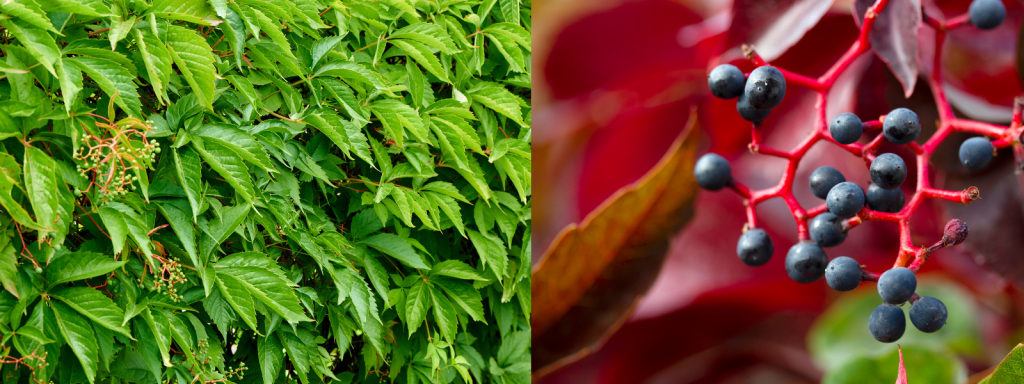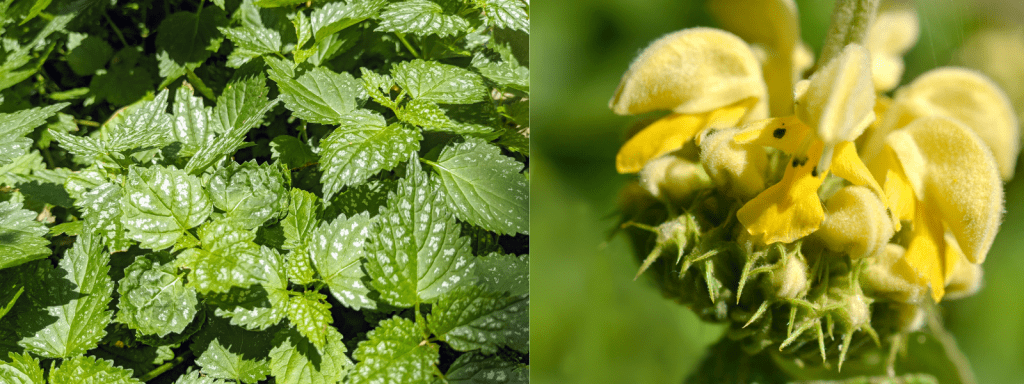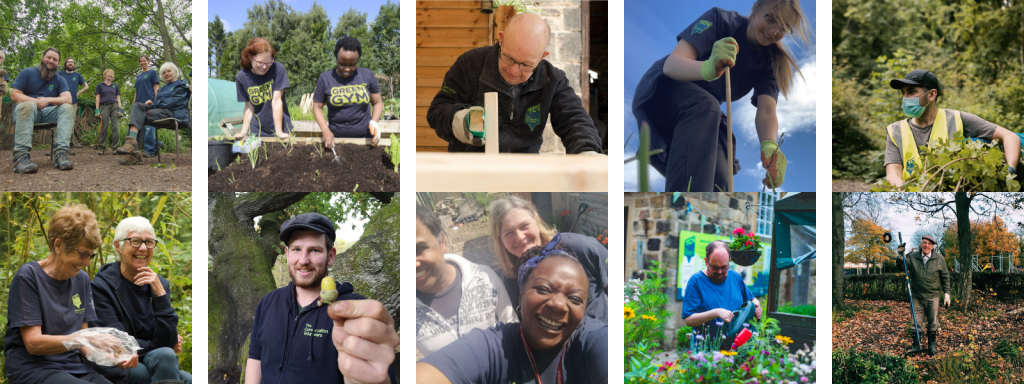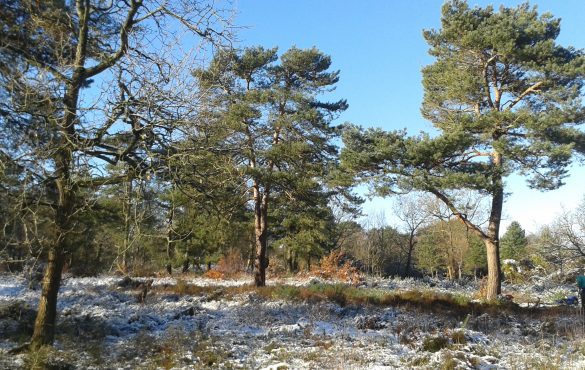As a nation of garden lovers, the UK is a haven for an abundance of plant species. However, not all plants are beneficial to our delicate ecosystems, and the introduction of invasive non-native plant species can cause significant ecological problems.
In this blog post, we explore the issues of invasive plant species, with a focus on some of the most problematic species in the UK and look at what we can do as conservationists in the UK to combat the issue together.
Don’t forget you can always join a local TCV volunteering group to learn more about controlling these species in your area, whilst helping our native wildlife to thrive!
What are Invasive Non-Native Plant Species?
Invasive non-native plant species have become an issue in the UK and are often introduced through activities such as horticulture, agriculture or trade. These plants are introduced from other parts of the world and can quickly spread and outcompete our native plants, which provide food and shelter for our native birds, mammals, reptiles, amphibians and invertebrates. Non-native plant species can cause a range of issues, including biodiversity loss, damage to infrastructure, and even increased flooding.
These plants can outcompete native plants for resources such as light, nutrients and water, and often have no natural predators or diseases to keep them in check. This means they can quickly spread and dominate an area, creating a monoculture and causing significant ecological problems.
Here we look at some of the worst offenders and focus on what we can do to alleviate the problem…
Himalayan Balsam (Impatiens glandulifera)

You may have noticed the sweet-smelling Himalayan Balsam in flower along many of our beloved waterways. This non-native invasive plant species has become a significant problem in the UK. It is a fast-growing plant that can grow up to 2 meters in height, shading out other plant species and reducing biodiversity. It is also known for its explosive seed pods, which can spread seeds up to 7 meters away, making it difficult to control and eradicate. Additionally, it can cause riverbank erosion, increasing the risk of flooding.
What can we do?
- Pulling up the plant by hand is an effective method of control. Affectionately named ‘the balsam bash’.
- Cutting the plant down before it sets seed can also help to prevent its spread.
- Preventing the spread of Himalayan Balsam is important. Gardeners should dispose of the plant carefully, as it can spread from cuttings.
- Parts of the plant are actually edible. Young leaves and flowers are best for salads, older leaves can be used in cooking. The seeds have a nutty taste and are better consumed when young and pale in colour and can be used in baking.
Virginia-creeper (Parthenocissus quinquefolia)

Virginia-creeper is an invasive species that is native to North America and is grown as a climber on houses in the UK because of its arguably beautiful deep red-coloured autumn leaves. It is often planted as an ornamental plant, but its aggressive growth habit means it can quickly become a problem. It climbs over other plants, smothering them and reducing biodiversity, and can also damage buildings by growing into cracks and causing structural damage.
What can we do?
- Cutting the plant down and removing it from the site is an effective method of control.
- Gardeners should dispose of the plant carefully, as it can spread easily from cuttings.
- It is advised that you wear gloves because the plant’s sap can irritate your skin.
Variegated Yellow Archangel (Lamiastrum galeobdolon argentatum)

Variegated Yellow Archangel is an invasive plant species that is native to Europe and Asia. It has become a significant problem in the UK due to its ability to spread quickly, forming dense mats that outcompete native plant species. It can also cause problems in woodlands by preventing the growth of young trees and reducing biodiversity. Each plant also produces hundreds of seeds.
What can we do?
- Digging up the plant and removing it from the site is an effective method of control, taking care to remove all the roots as well as the stems and leaves.
- Preventing the spread of Variegated Yellow Archangel is important. Gardeners should dispose of the plant carefully, as it can spread very easily from cuttings.
- Variegated yellow archangel is regarded as “controlled” waste and needs to be disposed of properly.
Japanese Knotweed (Fallopia japonica)

Japanese knotweed is a notorious invasive species that has been causing problems in the UK for many years. Originally introduced as an ornamental plant, it is now one of the most difficult plants to eradicate due to its extensive root system, which can spread up to 7 meters horizontally and 3 meters deep. It can cause structural damage to buildings and roads, and outcompetes native plants, reducing biodiversity in the areas it invades.
What can we do?
- The removal of Japanese knotweed must be performed with particular care due to its ability to spread.
- Digging up the plant and removing all traces from the site is an effective method of control.
- Professional herbicide treatment can also be used, but should only be carried out by a qualified specialist due to the plant’s resilience.
- Preventing the spread of Japanese Knotweed is crucial. Gardeners should dispose of the plant carefully referring to local council guidelines, as it can spread easily from cuttings.
___________________________________________________________
There are several things to keep in mind as conservationists in the UK to help combat the issue of invasive non-native plant species:
Prevention
Prevention is key in the fight against invasive non-native plant species. By taking steps to prevent the introduction of these plants into new areas, we can help to reduce the problem.
Be careful when choosing plants for community green spaces and ensure they are not invasive. Individually, we should not dump garden waste in wild areas where seeds and roots of invasive plants could grow.
Early Detection and Rapid Response
Early detection and rapid response are essential in controlling the spread of invasive non-native plant species. By identifying new infestations early and taking action quickly, we can prevent these plants from becoming established and spreading further in our community green spaces and gardens.

Conclusions
Non-native invasive plants pose a significant threat to the UK’s biodiversity. The plants listed above are just a few examples of invasive species that we need to be aware of and we will update this article as time goes on. By controlling the spread of invasive plants, we can help to preserve the beautiful native flora and fauna of the UK, and ultimately ensure a more sustainable and biodiverse future for communities to enjoy.
Want to make a difference? Find a TCV volunteering group in your area to learn more on this topic and help our native wildlife to thrive!

Keep up to date with the latest news and activities from The Conservation Volunteers by following us on Twitter, Facebook, LinkedIn and Instagram. You can also sign up to receive our Greenzine newsletter for more ways to get involved.




